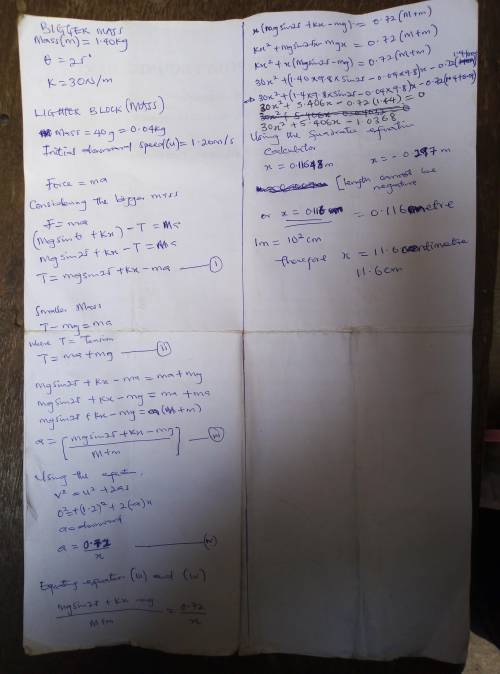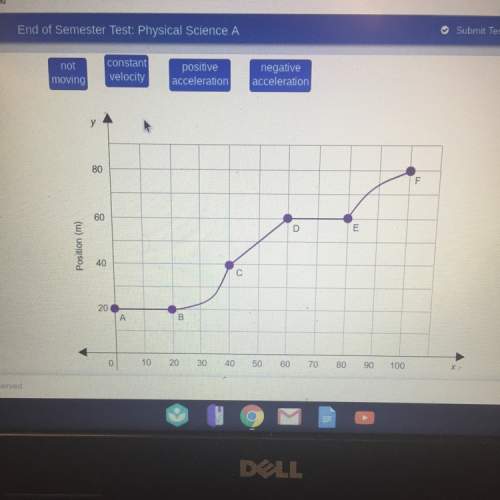
A 1.40-kg block is on a frictionless, 25 ∘ inclined plane. The block is attached to a spring (k = 30.0 N/m ) that is fixed to a wall at the bottom of the incline. A light string attached to the block runs over a frictionless pulley to a 40.0-g suspended mass. The suspended mass is given an initial downward speed of 1.20 m/s .
How far does it drop before coming to rest? (Assume the spring is unlimited in how far it can stretch.)

Answers: 2
Other questions on the subject: Physics

Physics, 22.06.2019 13:20, Tess3492
It is reasonable to assume that the bulk modulus of blood is about the same as that of water (2.2 gpa). as one goes deeper and deeper in the ocean, the pressure increases by 10000 pa for every meter below the surface. if a diver goes down 80.0 m in the ocean, by how much does each cubic centimeter of her blood change in volume? give the answer in cubic centimeters (actually one cubic centimeter equals one milliliter).
Answers: 2

Physics, 22.06.2019 14:40, casie65
During the experiment if you could triple the breakaway magnetic force with all other quantities left unchanged, what is the new value for the critical velocity if it was v0 (initial velocity), initially? (b) now if you halved the radius with all other quantities left unchanged, what is the new critical velocity if it was v0 (initial velocity), initially? (c) if during the experiment, critical velocity quadrupled with all other quantities left unchanged, what is the new breakaway force if its magnitude was initially f0,?
Answers: 1

Physics, 22.06.2019 21:30, itaheart101
What ia the energy of an object because of its potential and kinetic energies
Answers: 1

Physics, 22.06.2019 23:00, shelbybibb99
Acommon technique in analysis of scientific data is normalization. the purpose of normalizing data is to eliminate irrelevant constants that can obscure the salient features of the data. the goal of this experiment is to test the hypothesis that the flux of light decreases as the square of the distance from the source. in this case, the absolute value of the voltage measured by the photometer is irrelevant; only the relative value conveys useful information. suppose that in part 2.2.2 of the experiment, students obtain a signal value of 162 mv at a distance of 4 cm and a value of 86 mv at a distance of 5.7 cm. normalize the students' data to the value obtained at 4 cm. (divide the signal value by 162.) then calculate the theoretically expected (normalized) value at 5.7 cm.
Answers: 2
Do you know the correct answer?
A 1.40-kg block is on a frictionless, 25 ∘ inclined plane. The block is attached to a spring (k = 30...
Questions in other subjects:

Mathematics, 23.02.2021 18:00

History, 23.02.2021 18:00

History, 23.02.2021 18:00

Biology, 23.02.2021 18:00

Social Studies, 23.02.2021 18:00

Mathematics, 23.02.2021 18:00

Mathematics, 23.02.2021 18:00

Mathematics, 23.02.2021 18:00









